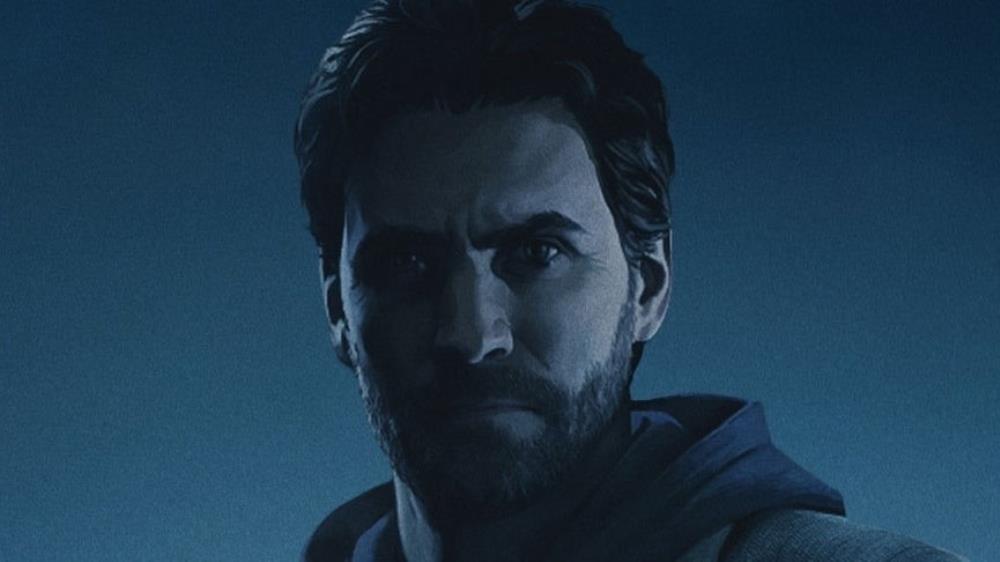“He took out his hip flask when he reached the page that described how he reached the page that made him take out his hip flask.” As Alan reads this page of his manuscript aloud, the paradox of Alan Wake comes full circle. Like the age old question of the chicken or the egg, the story of Alan Wake begs to question the very nature of storytelling – what came first, the author or the story? Are we playing the game, or is the game playing us? This is just one theme in Alan Wake’s looping, David Lynch-esque narrative, a story that lasts roughly ten hours of twists and turns, constantly engaging the audience and challenging them to think.
Alan Wake is the near seven year opus of Remedy Entertainment and Sam Lake, the studio and writer behind the Max Payne series. While the game has undergone much revision and turmoil, the end result sticks very close to Remedy’s roots. Gameplay concepts, storytelling elements and even throwbacks to the Max Payne games all circulate throughout Alan Wake. But despite their similarities, these two titles offer extremely different experiences. And once again, Remedy has delivered a new takes on the third person shooter genre that some may soon copy, but none will replicate.
Like the Max Payne series, Alan Wake focuses a great deal of its efforts on storytelling. Max Payne utilized a combination of film noir and graphic novels to tell its tale of love, lust, deception, and murder. With Alan Wake, the principal tools are serial television and prose. The game’s story is broken down into six episodes, each a self-contained arc of the larger narrative with its own conclusion and cliffhanger into the next episode. Throughout each episode, Alan stumbles upon pages from a manuscript he supposedly wrote but has no recollection of writing. Soon these pages become prophecy as the events unfold in game, each page providing an interesting insight into past events or an ominous foreshadowing of things to come. Moreover, the levels are riddled with self-commenting television shows and radio broadcasts commenting on the game’s story from an outsider’s perspective. These additional elements, which worked so well in the Max Payne games, add reflexivity to the story that makes you contemplate your actions and their consequences. These elements also build deep and diverse cast of characters, Lake’s strongpoint from the Payne series. While the characters in Alan Wake tend to resemble caricatures at times, the protagonist always remains human and a perfect subject to experience the game through. Cutscenes more than do their job, providing excellent facial renders and voice acting – not the level of Uncharted or Metal Gear Solid, but certainly the next tier down. Working over the television inspired narration, Alan Wake’s presentation sits top notch with many of the genre’s current heavyweights.
The gameplay blends typical Remedy action, minus bullet time, with survival-horror elements that emphasize survivability over bullet spraying and body counts. You defend yourself from a mob of overwhelming darkness known as the Taken, generally coming in the form of demonic miners and loggers complete with pickaxes, shovels, chainsaws and other goodies waiting to tear you apart. To fend off the intermittent hordes, Alan arms himself with a host of light based weaponry and an assortment of your typical bullet fare. The light weapons begin with a standard flashlight, but grow to include flares, flashbangs and a devastating flare gun that resembles a rocket launcher in a typical shooter. In most cases, light will drain the Taken’s defense until you can finally pump them full of lead. However, some light sources will put the Taken out of action all by themselves, including environmental light sources such as lampposts and spotlights.
Rated T instead of M, Wake displays very little in the gore department, featuring only one fairly brutal dismembering by axe early in the game. The rest is a series of disintegrating phantoms and demons akin to Poltergeist and The X-Files brand of terror instead of the bastardized gore-horror that riddles the media today. Alan Wake is scary, legitimately scary – especially late at night with all the lights off. It messes with your head, makes you question reality, and constantly has you looking over your shoulder. On harder difficulties, the game can even become menacing as the search for protective light sources becomes paramount in the quest to preserve ammo and batteries.
Graphically, Alan Wake may not be as stunning as it was in the E3 trailer form 2005. But the game’s biggest visual achievement is without question its use of light – not just as a gameplay mechanic but as an element of the level design. Darkness stands out in rich oceans of black, penetrated only by the beam of your flashlight and the occasional lamp. While the early game may not demonstrate this to its full extent, the later stages increase both in darkness and in terror. Your flashlight even reveals light sensitive paint littered through Bright Falls. One instance provides an eerie example of environmental storytelling in the vein of Portal’s scribbling of cake and lies. Unfortunately Remedy failed to capture this idea to its full extent, but such a concept could definitely find itself in latter episodes of the series.
The environments look spectacular, but they can tend to be repetitive and at times difficult to navigate. While the open forests provide both an unsettling aura and an open realm to explore, they sometimes string together like a never-ending labyrinth of foliage, never certain which way is forward. As the game progresses, the levels become increasingly varied, including a slew of brilliant spaces in episode four that even feature a hedge maze that screams Stephen King’s The Shining. However, you always seem to find yourself back in the backtrails at some point.
While the darkness tends to distract from some of the gorgeous vistas and scenery throughout the Pacific Northwest, Remedy don’t allow their hubris to interfere with the gameplay. While early opinions labeled Alan Wake to a technical showcasing, it is a videogame first and foremost and never loses sight of that. Its use of dynamic and demanding gameplay with visual and interactive storytelling ring out just as true with Alan Wake as Remedy did with Max Payne before it.
Remedy even try to spice things up with varied gameplay in the form of driving sequences. However, these provide some of the lowest moments of the game. The control and physics are downright horrible and the more you drive in the game the less you want to. While a couple instances offer a change of pace and a certain destructive satisfaction, the driving tends to weigh the experience down. Thankfully it occurs in very brief spurts, but one use in the final episode lasts far too long and does little more than expedite travel time, a side effect usually associated with lazy game design. If Remedy scratched the feature entirely, the game certainly wouldn’t suffer.
Much like Max Payne before it, Alan Wake manages to breathe fresh air into the third person shooter genre, simultaneously reviving the lost art of psychological horror absent from gaming since the Silent Hill and Resident Evil franchises dominated the late 90s. Fans of Max Payne, survival-horror, or narrative heavy games should find themselves right at home with Alan Wake. While it may not be the revolutionary display Microsoft and Remedy touted in 2005, Alan Wake stands out as one of the more complete, immersive and entertaining gaming experiences in the current generation – a guiding light in an ocean of darkness.
http://davidrage.wordpress....
Alan Wake 2 continues the writer's story, 13 years later.

Remedy has Alan Wake merch on sale, including a pretty blue thermos. Unfortunately, things haven’t gone according to plan, and many players who want a thermos find themselves without one, though it does appear that Remedy is attempting to fix things. Nevertheless, it has resulted in a lot of upset, illustrating just how much the thermos means to Alan Wake fans.

"I really, really, desperately wanted him to start it off."
The story borrowed HEAVILY from the King novel "The Dark Half" anyway. Figured there'd be some sort of lawsuit but seems King was in on and ok with it.
this game the shit it is right behind UC2 graphics but UC2 does look better but not by much....remedy did do good i cant wait for the 2 one...
Lmao!!!! After reading your review for heavy rain and now Alan wake lol!
What are u smoking?